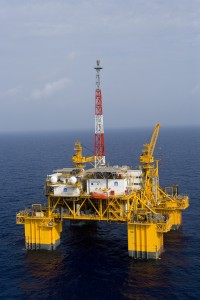Individual, companies to receive OTC Distinguished Achievement Awards
Each year OTC recognizes individuals and companies that have made outstanding contributions to the offshore industry. Two awards will be presented during the annual Awards Luncheon scheduled for Tuesday, May 4, at OTC.

The Distinguished Achievement Award for Individuals will be presented to Hugh Elkins for his contributions during more than 53 years in the offshore oil industry. Mr Elkins served as Director of Business Development for National Oilwell Varco (NOV) before his retirement. He previously served more than 20 years in executive engineering positions at Hydril. He developed the industry standard of 6 ft radius technology for subsea wellhead guide bases and blow out preventer stack guide frames, which permitted the industry interchangeability of subsea equipment.
 The Distinguished Achievement Award for Companies, Organizations and Institutions will be awarded to Anadarko Petroleum and Enterprise Field Services in recognition for the record-setting Independence Hub for its innovative collaboration in creating a coordinated infrastructure solution that provided access to ultra-deepwater reserves that previously were economically unfeasible. The project represents a 10% increase in the supply of natural gas from the Gulf of Mexico.
The Distinguished Achievement Award for Companies, Organizations and Institutions will be awarded to Anadarko Petroleum and Enterprise Field Services in recognition for the record-setting Independence Hub for its innovative collaboration in creating a coordinated infrastructure solution that provided access to ultra-deepwater reserves that previously were economically unfeasible. The project represents a 10% increase in the supply of natural gas from the Gulf of Mexico.

The keynote speak at the luncheon will be Charles D. (Chuck) Davidson, Chairman and CEO of Nobel Energy. He has more than 35 years of energy industry experience. Prior to joining Noble Energy he was Chairman, President and CEO of Vastar Resources.




